Timothy Rogers
Bayesian grey-box identification of nonlinear convection effects in heat transfer dynamics
Jul 01, 2024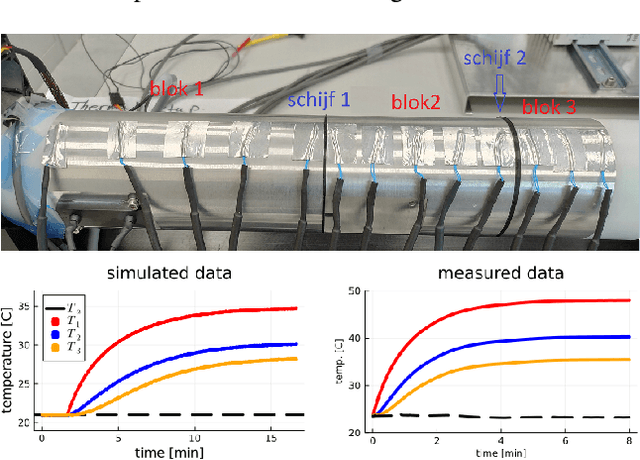



Abstract:We propose a computational procedure for identifying convection in heat transfer dynamics. The procedure is based on a Gaussian process latent force model, consisting of a white-box component (i.e., known physics) for the conduction and linear convection effects and a Gaussian process that acts as a black-box component for the nonlinear convection effects. States are inferred through Bayesian smoothing and we obtain approximate posterior distributions for the kernel covariance function's hyperparameters using Laplace's method. The nonlinear convection function is recovered from the Gaussian process states using a Bayesian regression model. We validate the procedure by simulation error using the identified nonlinear convection function, on both data from a simulated system and measurements from a physical assembly.
Humor in AI: Massive Scale Crowd-Sourced Preferences and Benchmarks for Cartoon Captioning
Jun 15, 2024
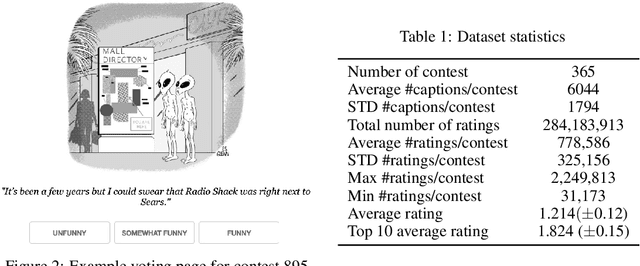
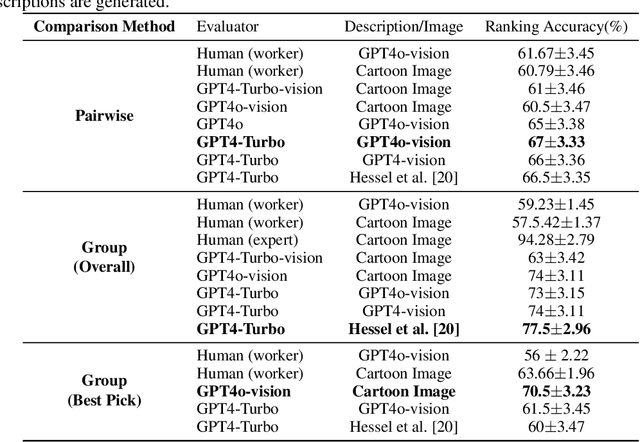
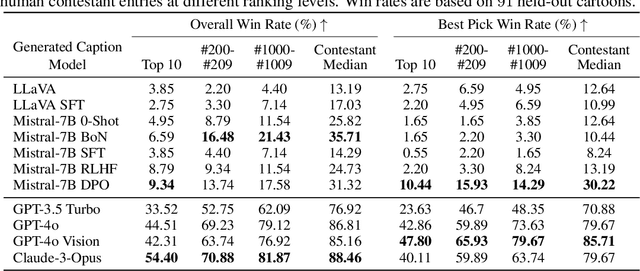
Abstract:We present a novel multimodal preference dataset for creative tasks, consisting of over 250 million human ratings on more than 2.2 million captions, collected through crowdsourcing rating data for The New Yorker's weekly cartoon caption contest over the past eight years. This unique dataset supports the development and evaluation of multimodal large language models and preference-based fine-tuning algorithms for humorous caption generation. We propose novel benchmarks for judging the quality of model-generated captions, utilizing both GPT4 and human judgments to establish ranking-based evaluation strategies. Our experimental results highlight the limitations of current fine-tuning methods, such as RLHF and DPO, when applied to creative tasks. Furthermore, we demonstrate that even state-of-the-art models like GPT4 and Claude currently underperform top human contestants in generating humorous captions. As we conclude this extensive data collection effort, we release the entire preference dataset to the research community, fostering further advancements in AI humor generation and evaluation.
Classification with Sparse Overlapping Groups
Sep 04, 2014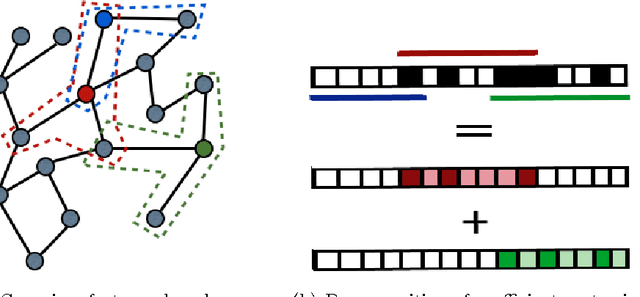



Abstract:Classification with a sparsity constraint on the solution plays a central role in many high dimensional machine learning applications. In some cases, the features can be grouped together so that entire subsets of features can be selected or not selected. In many applications, however, this can be too restrictive. In this paper, we are interested in a less restrictive form of structured sparse feature selection: we assume that while features can be grouped according to some notion of similarity, not all features in a group need be selected for the task at hand. When the groups are comprised of disjoint sets of features, this is sometimes referred to as the "sparse group" lasso, and it allows for working with a richer class of models than traditional group lasso methods. Our framework generalizes conventional sparse group lasso further by allowing for overlapping groups, an additional flexiblity needed in many applications and one that presents further challenges. The main contribution of this paper is a new procedure called Sparse Overlapping Group (SOG) lasso, a convex optimization program that automatically selects similar features for classification in high dimensions. We establish model selection error bounds for SOGlasso classification problems under a fairly general setting. In particular, the error bounds are the first such results for classification using the sparse group lasso. Furthermore, the general SOGlasso bound specializes to results for the lasso and the group lasso, some known and some new. The SOGlasso is motivated by multi-subject fMRI studies in which functional activity is classified using brain voxels as features, source localization problems in Magnetoencephalography (MEG), and analyzing gene activation patterns in microarray data analysis. Experiments with real and synthetic data demonstrate the advantages of SOGlasso compared to the lasso and group lasso.
Sparse Overlapping Sets Lasso for Multitask Learning and its Application to fMRI Analysis
Nov 22, 2013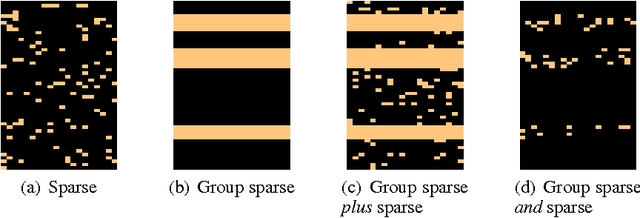


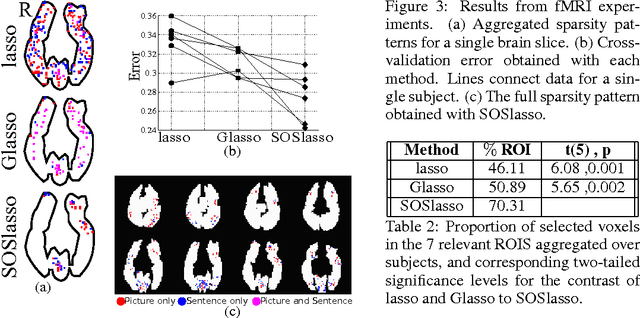
Abstract:Multitask learning can be effective when features useful in one task are also useful for other tasks, and the group lasso is a standard method for selecting a common subset of features. In this paper, we are interested in a less restrictive form of multitask learning, wherein (1) the available features can be organized into subsets according to a notion of similarity and (2) features useful in one task are similar, but not necessarily identical, to the features best suited for other tasks. The main contribution of this paper is a new procedure called Sparse Overlapping Sets (SOS) lasso, a convex optimization that automatically selects similar features for related learning tasks. Error bounds are derived for SOSlasso and its consistency is established for squared error loss. In particular, SOSlasso is motivated by multi- subject fMRI studies in which functional activity is classified using brain voxels as features. Experiments with real and synthetic data demonstrate the advantages of SOSlasso compared to the lasso and group lasso.
 Add to Chrome
Add to Chrome Add to Firefox
Add to Firefox Add to Edge
Add to Edge